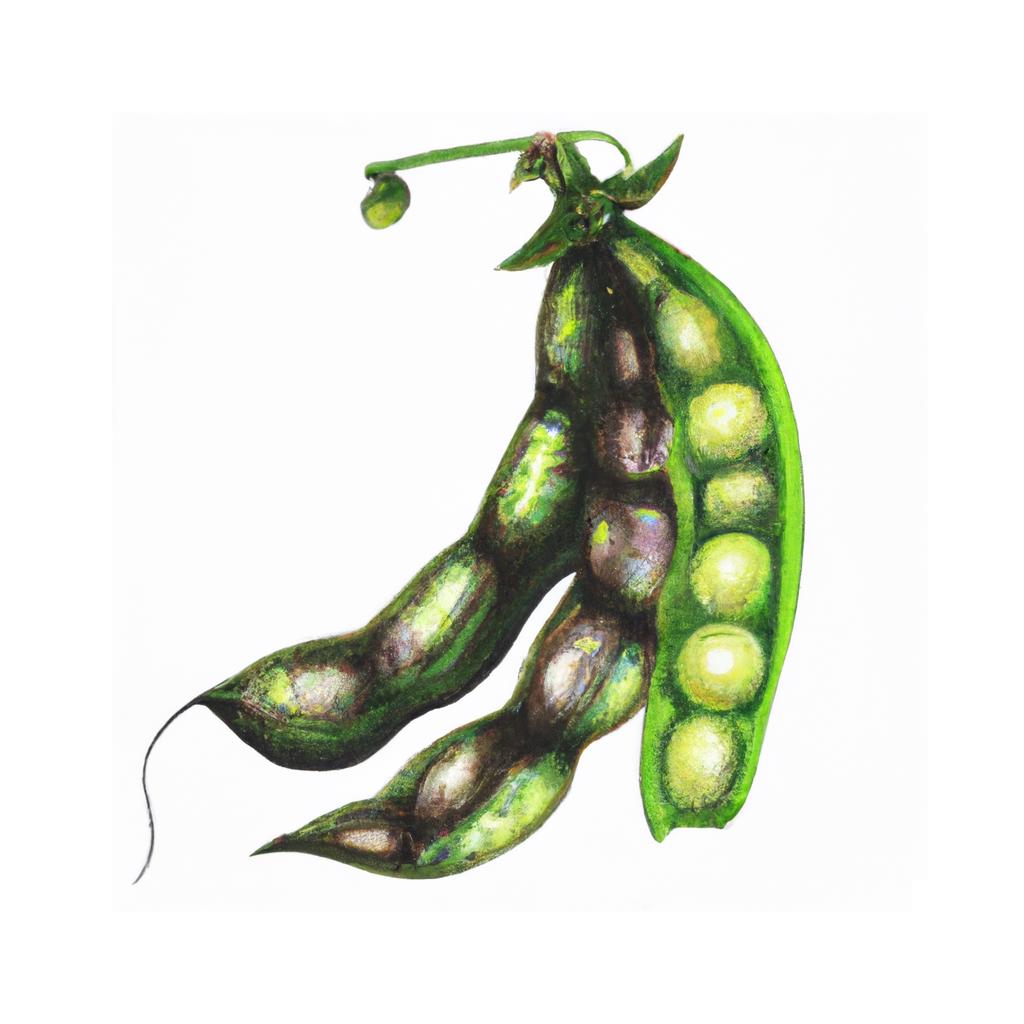
Broad Beans, also known as Fava Beans (Vicia faba), are an ancient legume native to the Mediterranean region and Asia. They have been a staple food in the human diet for thousands of years, and their cultivation dates back at least 6,000 years. These beans are highly nutritious and a great source of protein, fiber, vitamins, and minerals such as iron, magnesium, and potassium.
The plants themselves are hardy and relatively easy to grow, making them suitable for a wide range of growing conditions. Broad Beans are often grown as a winter crop, as they can tolerate cooler temperatures and can even survive frosts. The beans are encased in large, sturdy pods which protect them from pests and diseases. Their flowers are also quite attractive, featuring black and white petals that attract pollinators like bees.
In culinary circles, Broad Beans are incredibly versatile and can be used in various dishes across different cuisines. When young and tender, they can be eaten raw in salads or blanched for a few minutes and served as a side dish. Once cooked, their mild, slightly sweet flavor pairs well with fresh herbs, olive oil, and citrus. In Middle Eastern cuisine, they are commonly used in dishes like Ful Medames, a flavorful bean stew. Italians enjoy them in pasta dishes or simply sautéed with garlic and olive oil. Broad Beans can also be dried and ground into flour, which can be used to create various baked goods and other dishes.
Broad Beans are known for their interesting history and cultural significance. In ancient Rome, they were viewed as symbols of death and rebirth and were used in funeral rites. In Sicily, there is a tradition called 'Cuccìa' that commemorates Saint Lucy's Day in which a dessert made of Broad Beans, wheat berries, and sugar is prepared to celebrate the end of a famine. The beans also play a central role in the Jewish festival of Purim, as they are mentioned in the Book of Esther.
Whether you are growing Broad Beans for their nutritional value, culinary versatility, or simply to enjoy their attractive flowers, these ancient legumes are a fantastic addition to any garden.
This is advice is most applicable to growers in the UK, you may need to adjust the timings if you live somewhere with a different climate and/or seasons.
| Month | Tasks | Advice |
|---|---|---|
| January | sow, | Sow broad bean seeds indoors or in a cold frame to get a head start on the growing season. Cover the seeds with 5cm of compost. |
| February | sow, | Sow broad beans directly in the ground if the soil is workable. Ensure there is no risk of frost and cover with 5cm of soil. |
| March | sow, plant out, | Continue sowing broad beans outdoors if soil conditions are suitable. Plant out seedlings from earlier sowings, spacing them at least 20cm apart in rows 60cm apart. |
| April | plant out, | Plant out any remaining broad bean seedlings from earlier sowings, ensuring sufficient space between plants and rows. |
| May | - | - |
| June | harvest, | Begin harvesting your broad beans when the pods have filled out and are at least 7cm long. Harvest regularly to encourage more growth. |
| July | harvest, | Continue harvesting broad beans throughout the month, ensuring not to let pods become too large or tough. |
| August | harvest, | Finish harvesting your broad beans. Cut back foliage and leave the roots in the ground to release nitrogen and improve soil fertility. |
| September | sow, | Sow overwintering broad bean varieties directly outdoors. This will produce an early crop the following spring. |
| October | - | - |
| November | - | - |
| December | - | - |